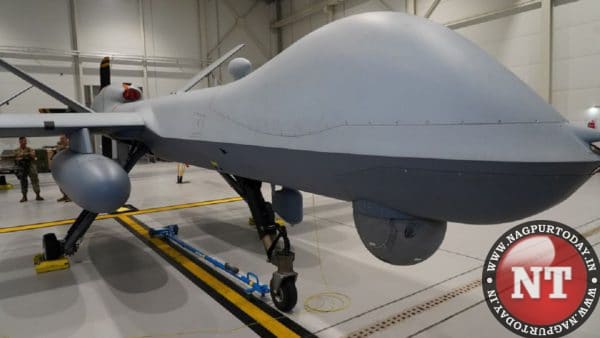India and the United States are keen for an early conclusion of the 30 MQ-9B predator armed drones deal at a cost of over USD 3 billion, which will help New Delhi strengthen its overall surveillance apparatus along the Line of Actual Control and the Indian Ocean.
In the works for more than five years, the “ball is now in India’s court”, officials familiar with the development said Wednesday, without explaining further.
The MQ-9B predator armed drones — 10 each for three services — is seen to be a key part of India’s national security and defense needs.
The officials did not elaborate further but ruled out that there was any bureaucratic hurdle or regulatory issues involved.
“I have to take that back and check on that,” Assistant Secretary of State for Political Military Affairs Jessica Lewis told reporters here when asked for the delay in the deal, which was announced in the summer of 2017.
It has been pending for quite some time now, for reasons not known in the public. However, the issues are believed to have been discussed during the meetings that the visiting National Security Advisor Ajit K Doval has had with top American leadership, including his counterpart Jake Sullivan.
During the meetings, it is believed that both sides expressed their eagerness to see that the drone deal is fast tracked. India is eager that an early decision would help it get an early delivery of MQ-98 predator armed drones that would strengthen its national security and surveillance not only in the Indian Ocean, but also along the LAC.
The Biden administration is keen on inking this deal as soon as possible, which will create jobs and would be politically beneficial ahead of the next year’s presidential elections, according to people familiar with the development.
“MQ-9B would enable its Indian military users to fly farther than anything else in this category, spend more time in the air and handle a greater diversity of missions than any other similar aircraft. The SkyGuardian and SeaGuardian can deliver full-motion video in virtually any conditions, day or night, as well as other kinds of detailed sensing with their onboard systems,” Vivek Lall, chief executive, General Atomics Global Corporation, told PTI.
“The aircraft also can carry a wide variety of specialist payloads if they must adapt to a specific mission. A SkyGuardian becomes a SeaGuardian, for example, when it carries a 360-degree maritime search radar that gives users a quality of maritime domain awareness they can’t achieve any other way,” he said.
Artificial intelligence, machine learning and other sophisticated technologies help unlock the rich feed of insight from these aircraft, analyse it and distribute it to those who need it to take quick decisions, Lall said.
“Other payloads include communications relays so the aircraft can serve as a node connecting forces over land or sea or other intelligence, surveillance or military systems. These aircraft can conduct search and rescue, help fight wildfires, support customs authorities, augment naval forces and take many other tasks,” he said.
















